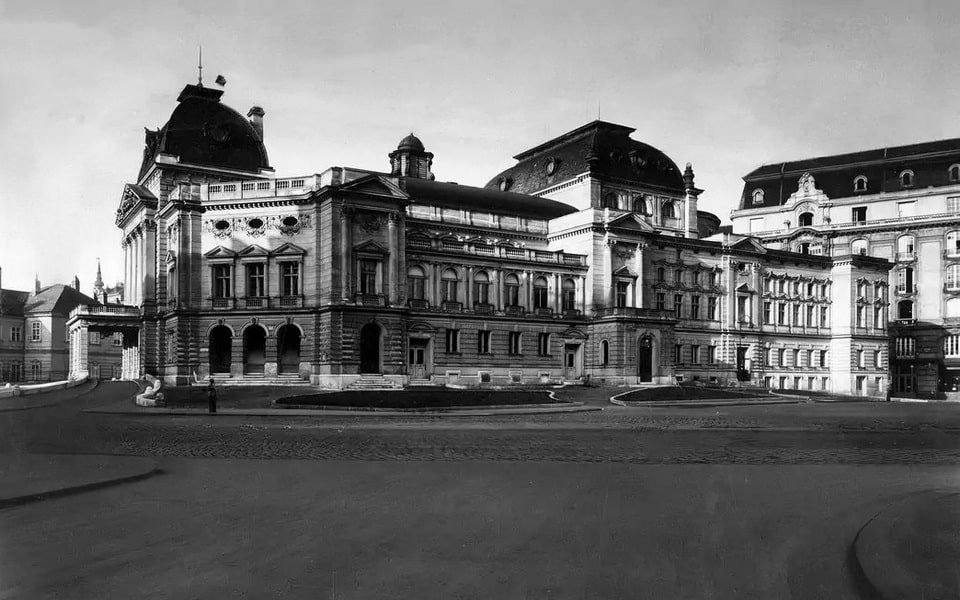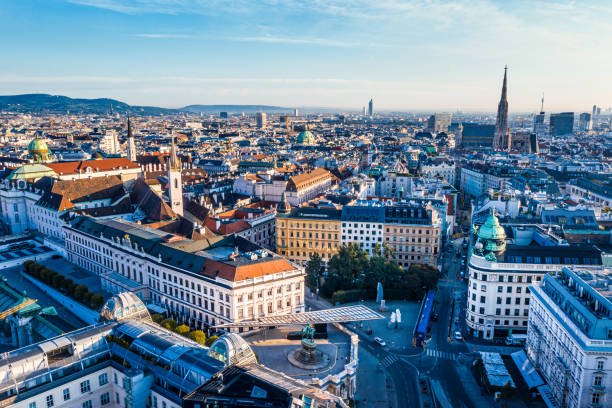Vienna Then and Now
Vienna Then
Vienna, the capital of Austria, is both a city and a federal state (Bundesland). It is the smallest of Austria’s nine states in terms of area, yet it is the most populous.
Historically, Vienna has been a significant political and cultural hub in Europe.
From 1558 to 1918, it served as an imperial city, first as the seat of the Holy Roman Empire until its dissolution in 1806, and later as the capital of the Austro-Hungarian Empire.
This long period of imperial dominance left an indelible mark on the city’s architecture, culture, and global influence, with landmarks like the Hofburg Palace, St. Stephen’s Cathedral, and the grand ring roads symbolizing its imperial past.
Today, Vienna is renowned not only for its historical legacy but also for its vibrant arts scene, sophisticated urban design, and central role in European and global affairs.

Vienna History
Vienna had emerged from the war with significant physical and economic damage.
Much of its infrastructure, including buildings, homes, and industries, had been destroyed or severely damaged during the war.
The city’s population had been greatly reduced, and rebuilding efforts were slow due to the postwar economic challenges.
Related Article: Athens Then and Now
The political climate was also in disarray, with Austria’s status as an independent nation in question following the occupation by Nazi Germany and the loss of its previous monarchy.
In the aftermath of World War II, the Allied occupation and the partitioning of Austria into zones of control by the Soviet Union, the United Kingdom, the United States, and France played a crucial role in the city’s recovery.
As tensions between the East and West grew during the Cold War, Vienna found itself in a unique position.
Related Article: Rome Then and Now

The city, located near the Iron Curtain, became a hub for international diplomacy and espionage.
It hosted numerous diplomatic negotiations, and various intelligence agencies operated in the city, adding to its role as a center of global intrigue.
The Austrian State Treaty of 1955, which led to the withdrawal of occupying forces, restored Austria’s sovereignty and marked the end of Allied occupation.
Related Article: Barcelona Then and Now
Vienna once again became the capital of a sovereign nation, and the city began to rebuild its infrastructure, economy, and cultural institutions.
The city became a symbol of neutrality and cooperation in the midst of Cold War tensions, and its role as an international center was further solidified with the establishment of organizations like the United Nations Office in Vienna in 1961.
By the mid-20th century, Vienna had also regained its position as a cultural powerhouse.
Related Article: Amsterdam Then and Now
Its music, art, and intellectual traditions, which had been interrupted by the wars and political upheaval, were revitalized.
The city continued to attract artists, musicians, and thinkers from around the world, and its reputation as a center for the arts, education, and international diplomacy endured into the 21st century.
Related Article: Berlin Then and Now
Vienna Now

Vienna, the capital and largest city of Austria, stands as a dynamic hub of cultural, political, and economic significance.
Home to over two million people, it represents nearly a third of Austria’s total population.
The city’s metropolitan area extends this reach to nearly 2.9 million inhabitants, making it not only the largest city in Austria but also one of the most populous in the European Union.
Related Article: Paris Then and Now
Situated on the eastern edge of the Vienna Woods, at the northeastern foothills of the Alps, Vienna occupies a strategic position at the confluence of the Danube River and the Pannonian Basin, which separates it from the rest of the country.
This unique location has fostered Vienna’s growth into a thriving center of commerce and culture.
Vienna is renowned for its rich musical heritage, often referred to as the “City of Music.”
Related Article: London Then and Now
The city has been the home of some of the world’s greatest composers, including Ludwig van Beethoven, Wolfgang Amadeus Mozart, Johannes Brahms, Franz Schubert, and Johann Strauss.
Vienna’s legacy as a musical epicenter stretches from the Classical era through to the early 20th century, shaping Western classical music for centuries.
The city’s connection to music is deeply embedded in its architecture and daily life, with concert halls, opera houses, and theaters regularly showcasing the works of these musical giants.
Related Article: Phnom Penh Then and Now
The Vienna Philharmonic Orchestra and the annual Vienna State Opera performances continue to be iconic representations of the city’s ongoing commitment to its musical legacy.
In addition to its musical history, Vienna has also earned a reputation as a global center for psychology, being home to the world’s first psychoanalyst, Sigmund Freud.
Freud’s work in the field of psychology has had a lasting impact on the world, and his association with Vienna further cements the city’s role as an intellectual and cultural powerhouse.
Related Article: Kathmandu Then and Now
Vienna’s historic center is a UNESCO World Heritage site, characterized by its Baroque palaces, gardens, and the iconic Ringstraße, a grand boulevard lined with monumental buildings, monuments, and parks.
These architectural ensembles reflect the city’s long history and its continued status as a leading European cultural capital.
Furthermore, Vienna is regularly recognized for its exceptional quality of life.
Related Article: Colombo Then and Now
In 2024, the city retained its title as the most livable city according to the Economist Intelligence Unit, a ranking it has held for several years, with the exception of 2021 due to COVID-19 restrictions.
This distinction is attributed to Vienna’s combination of a high standard of living, robust public services, and a comprehensive urban infrastructure that prioritizes residents’ well-being.
Related Article: Dhaka Then and Now
The city’s efficient public transport system, extensive green spaces, and rich cultural offerings contribute to its appeal as a place to live and work.
Vienna’s consistent ranking as a top global city highlights its success in blending modernity with tradition, making it a desirable destination for people from all walks of life.
Related Article: Lahore Then and Now
FAQs
Why is Vienna so famous?
Vienna is renowned for its rich cultural heritage, particularly in music, having been home to legendary composers like Mozart, Beethoven, and Strauss. It is also famous for its architectural beauty, including Baroque palaces, gardens, and the grand Ringstraße. Vienna is a major intellectual hub, historically associated with figures like Sigmund Freud.
Is Vienna an expensive city?
Vienna can be considered an expensive city, particularly in terms of housing and dining out. However, compared to other major European cities like London or Paris, it is relatively more affordable. Public transportation, healthcare, and education are high-quality and reasonably priced.
Is Vienna in Austria or Germany?
Vienna is the capital city of Austria, not Germany. It is located in the eastern part of Austria, along the Danube River.
Do they speak English in Vienna?
Yes, English is widely spoken in Vienna, especially in tourist areas, businesses, and among younger generations. While German is the official language, many people, particularly in urban areas, are fluent in English.






























